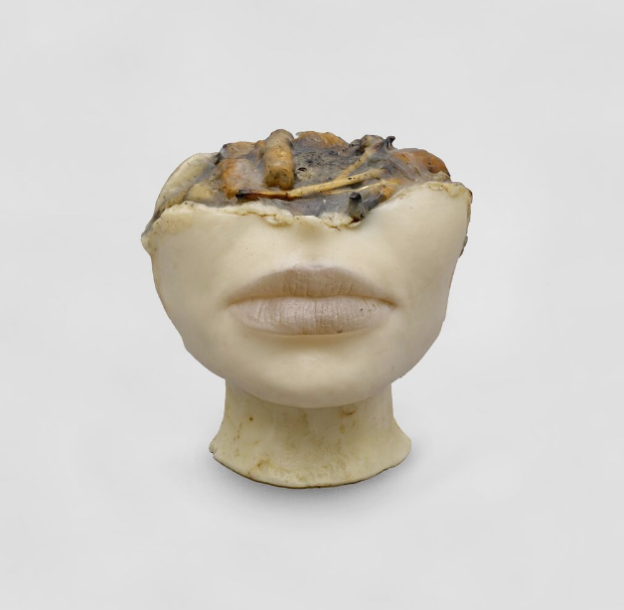

My work has its roots in sculpture. For years I threw myself into studying problems of balance, volume, space, shadow, and light…
I took stock of the awareness of our time. I used my knowledge of the craft, my intuition, and my intelligence to note with increased clarity the poverty of my methods in comparison to modern techniques. I have been conquered by the hero-miracle of our age, the machine. To it belong beauty, revelations, testimonies, the recording of history. To it belong, in the end, truthful dreams and public demand…


Despite everything, I persist in trying to fix in resin the traces of our body: I am convinced that of all the manifestations of the ephemeral, the human body is the most vulnerable, the only source of all joy, all suffering, and all truth, because of its essential nudity, is as inevitable as it is inadmissible on any conscious level. — Alina Szapocznikow, March 1972, Malakoff*


TO EXALT THE EPHEMERAL—ALINA SZAPOCZNIKOW, 1962–1972, a comprehensive exhibition of work by this essential artist, is on view in Manhattan for one more week.



TO EXALT THE EPHEMERAL—ALINA SZAPOCZNIKOW, 1962–1972
Through December 21.
32 East 69th Street, New York City.
February 7 through May 7, 2020.
Hauser & Wirth London
23 Savile Row, London.
*Alina Szapocznikow, “Mon œuvre puise ses racines…,” March 1972, (courtesy Alina Szapocznikow Archive, Piotr Stanisławski, National Museum in Kraków), in To Exalt the Ephemeral: Alina Szapocznikow, 1962–1972, exhibition catalog (Zürich: Hauser & Wirth, 2019).
See Griselda Pollock, “Traumatic Encryption: The Sculptural Dissolutions of Alina Szapocznikow,” in After-affects / After-Images: Trauma and Aesthetic Transformation in the Virtual Feminist Museum (Manchester: Manchester University Press, 2013).



To Exalt the Ephemeral—Alina Szapocznikow, 1962–1972, Hauser & Wirth, New York, October 29–December 21, 2019, from top: Cendrier de célibataire I (The Bachelor’s Ashtray I), 1972, colored polyester resin and cigarette butts; Noga (Leg), 1962, plaster; Pamiątka I (Souvenir I), 1971, polyester resin, fiberglass, and photographs; Iluminowana (Illuminated Woman), 1966–1967, plaster, colored polyester resin, electrical wiring, and metal; Forma II, 1964–1965, unfired pink clay; Tumeur (Tumor), 1970, colored polyester resin and gauze; Szapocznikow in 1968, photograph by Roger Gain; Lampe-bouche (Illuminated Lips), 1966, colored polyester resin, electrical wiring, and metal; Sculpture-lampe, colored polyester resin, electrical wiring, and metal; Autoportrait, 1971, polyester resin and gauze; Man with an Instrument, 1965, cement, car part, and black patina; To Exalt the Ephemeral installation view, 2019; Szapocznikow with Envahissement de tumeurs (Invasion of Tumors) at her Malakoff studio, 1970; Sans titre (No Title), 1964–1965, original plaster; Ventre-coussin (Belly Cushion) , 1968, polyurethane foam, and Ventre, 1968, plaster, installation view, Alina Szapocznikow Malakoff studio, Paris, 1968. Artwork photographs by Fabrice Gousset, except To Exalt the Ephemeral installation view by Genevieve Hanson, Noga (Leg) by Thomas Barratt, and Forma II by Filip Vanzieleghem. All artwork by Alina Szapocznikow; images courtesy and © 2019, ProLitteris, Zürich, ADAGP, Paris, the Estate of Alina Szapocnikow, Piotr Stanislawski, Galerie Loevenbruck, Paris, and Hauser & Wirth.



